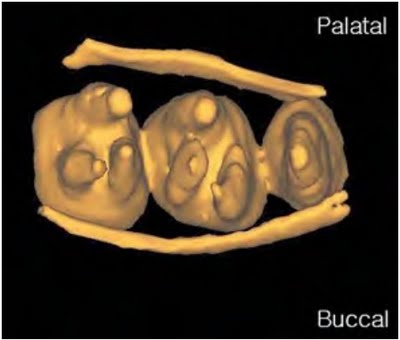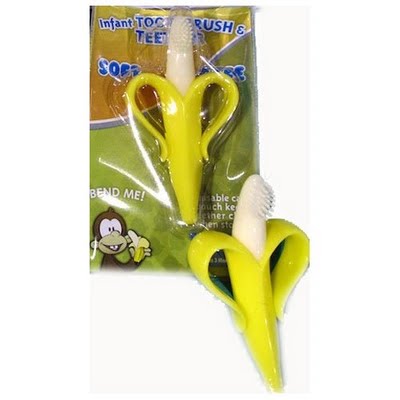Tooth GENE, London Dentist SICK,, Short Implant selection, Healthy Baby ?
Scientists uncover genes that influence tooth development
Genes that influence tooth development in the first year of life have been identified by scientists.
The research team has also uncovered a link between the delayed appearance of milk teeth and the need for future corrective work.
The research, which involved teams from Imperial College London, the University of Bristol and the University of Oulu in Finland, has identified several genes which affect tooth development in the first year of life.
They found that babies who carried specific genetic variants tended to have fewer teeth by their first birthday than other children. Full PAPER
How to achieve best position for Microimplants by Park et al
The midpoints between the roots were located distally to the contact point and from the cervical to the apical areas. The lines connecting these midpoints from the cervix to the
apex of the roots in the mandibular arch had more distal inclination than in the maxillary arch.
Conclusions: To minimize root contacts, microimplants need to be inclined distally about 10-20 degrees and placed 0.5 to 2.7mm distally to the contact point to minimize root contact according to sites and levels, except into palatal interradicular bone between the maxillary first and second molars. (AJODO Feb 2010)
Dentists in LONDON 'sickest of all health professionals'
The free, confidential service for practitioners living or working in the London area was launched by the National Clinical Assessment Service amid concerns that some doctors and dentists were either struggling to access appropriate care or were suffering in silence rather than seeking proper medical help because of fears they would be stigmatised.
Dentists are the sickest of all health professionals, according to the head of an NHS service aimed at helping clinicians struggling with physical or mental illnesses. MORE
How to Select Short implants ?
The key to the implants' strength is their width, Dr. Urdaneta said. As long as they are at least 3 mm wide, they do not break, he said. Typically, such implants are embedded about 7.9 mm into the bone, but some are inserted only 5 mm deep. By contrast, long implants can be placed more than 11 mm into bone.
With short implants, "most impressive is what happens below the gum," he said. Some patients who wear these implants for five years have gained more than 1.5 mm of bone, according to Dr. Urdaneta.
Contrary to popular belief, he said, relatively large crown-to-implant ratios don't cause crestal bone loss. He cited a study in the International Journal of Oral and Maxillofacial Implants that compared bone loss of implants with different crown-to-implant ratios (JOMI, January-February 2005, Vol. 20:1, pp. 69-76). "Long implants and/or splinting can result in greater crestal bone loss," the study authors concluded. MORE
Want to deliver a healthy Clean baby ? Clean your teeth in time.
PREGNANT WOMEN have been warned not to ignore dental problems following the case of an unnamed woman with the common gum disease gingivitis who delivered a stillborn baby at 39 weeks.
Doctors were able to trace the oral bacteria in the 35-year-old mother’s mouth to bacteria found in the baby’s bloodstream, lungs and stomach.
The research was carried out by microbiologist Yiping Han in the Department of Periodontics at Case Western Reserve University School of Dental Medicine, Ohio.
The findings, published in the February issue of Obstetrics Gynecology , suggest that any disruption to the amniotic fluid could present a risk to both mother and baby – making the infection from gum disease a real risk.
Researchers from Queen Mary University of London have also found that bacteria from a woman’s mouth could be transferred through blood and amniotic fluid to her child while still in the womb. MORE
Teeth Show Evidence of Radiation Exposure
Researchers at Howard University in Washington College of Dentistry believe that tooth enamel stores important data about a person’s exposure to radiation. The team is developing Electron Paramagnetic Resonance (EPR) to determine the level of free radicals in substances, including tooth enamel.
What will this information be used for? The hope is that EPR can assist medical workers in triaging patients or dividing victims of radiation exposure into classes by the amount of radiation received. The new technology is minimally-invasive and would provide data useful in treating people exposed to radiation in an accident or by a “dirty bomb,” which refers to a radiation dispersal device. MORE
Genes that influence tooth development in the first year of life have been identified by scientists.
The research team has also uncovered a link between the delayed appearance of milk teeth and the need for future corrective work.
The research, which involved teams from Imperial College London, the University of Bristol and the University of Oulu in Finland, has identified several genes which affect tooth development in the first year of life.
They found that babies who carried specific genetic variants tended to have fewer teeth by their first birthday than other children. Full PAPER
How to achieve best position for Microimplants by Park et al
The midpoints between the roots were located distally to the contact point and from the cervical to the apical areas. The lines connecting these midpoints from the cervix to the
apex of the roots in the mandibular arch had more distal inclination than in the maxillary arch.
Conclusions: To minimize root contacts, microimplants need to be inclined distally about 10-20 degrees and placed 0.5 to 2.7mm distally to the contact point to minimize root contact according to sites and levels, except into palatal interradicular bone between the maxillary first and second molars. (AJODO Feb 2010)
Dentists in LONDON 'sickest of all health professionals'
The free, confidential service for practitioners living or working in the London area was launched by the National Clinical Assessment Service amid concerns that some doctors and dentists were either struggling to access appropriate care or were suffering in silence rather than seeking proper medical help because of fears they would be stigmatised.
Dentists are the sickest of all health professionals, according to the head of an NHS service aimed at helping clinicians struggling with physical or mental illnesses. MORE
How to Select Short implants ?
The key to the implants' strength is their width, Dr. Urdaneta said. As long as they are at least 3 mm wide, they do not break, he said. Typically, such implants are embedded about 7.9 mm into the bone, but some are inserted only 5 mm deep. By contrast, long implants can be placed more than 11 mm into bone.
With short implants, "most impressive is what happens below the gum," he said. Some patients who wear these implants for five years have gained more than 1.5 mm of bone, according to Dr. Urdaneta.
Contrary to popular belief, he said, relatively large crown-to-implant ratios don't cause crestal bone loss. He cited a study in the International Journal of Oral and Maxillofacial Implants that compared bone loss of implants with different crown-to-implant ratios (JOMI, January-February 2005, Vol. 20:1, pp. 69-76). "Long implants and/or splinting can result in greater crestal bone loss," the study authors concluded. MORE
Want to deliver a healthy Clean baby ? Clean your teeth in time.
PREGNANT WOMEN have been warned not to ignore dental problems following the case of an unnamed woman with the common gum disease gingivitis who delivered a stillborn baby at 39 weeks.
Doctors were able to trace the oral bacteria in the 35-year-old mother’s mouth to bacteria found in the baby’s bloodstream, lungs and stomach.
The research was carried out by microbiologist Yiping Han in the Department of Periodontics at Case Western Reserve University School of Dental Medicine, Ohio.
The findings, published in the February issue of Obstetrics Gynecology , suggest that any disruption to the amniotic fluid could present a risk to both mother and baby – making the infection from gum disease a real risk.
Researchers from Queen Mary University of London have also found that bacteria from a woman’s mouth could be transferred through blood and amniotic fluid to her child while still in the womb. MORE
Banana Tooth Brush
Baby Banana® Brush Teether for Infants ages 3 months to 1 year. Dental hygienist mom-invented. Gently massages gums and teeth. Develops good oral hygiene habits early, preventing cavities later. Easy to grasp "a-peel-ing" banana handles. Flexible material decreases risk of mouth injury. Non-allergenic medical grade silicone. BPA, latex, and phthalate free. Non-allergenic 100% highest quality silicone. Dishwasher and freezer friendly.Teeth Show Evidence of Radiation Exposure
Researchers at Howard University in Washington College of Dentistry believe that tooth enamel stores important data about a person’s exposure to radiation. The team is developing Electron Paramagnetic Resonance (EPR) to determine the level of free radicals in substances, including tooth enamel.
What will this information be used for? The hope is that EPR can assist medical workers in triaging patients or dividing victims of radiation exposure into classes by the amount of radiation received. The new technology is minimally-invasive and would provide data useful in treating people exposed to radiation in an accident or by a “dirty bomb,” which refers to a radiation dispersal device. MORE
Dentistry Goes fully Digital
Gilbert Achermann, President and CEO, commented: “Digitalisation will impact all aspects of dentistry as digital workflows supersede labour-intensive manual processes, enhancing interfaces, shortening treatment, reducing potential for error and improving quality assurance.” MORESelf Adjusting file Video
It is true or most likely a marketing gimmick ? whatever it is, fun to watch, very interesting video


0 Comments:
Post a Comment
<< Home